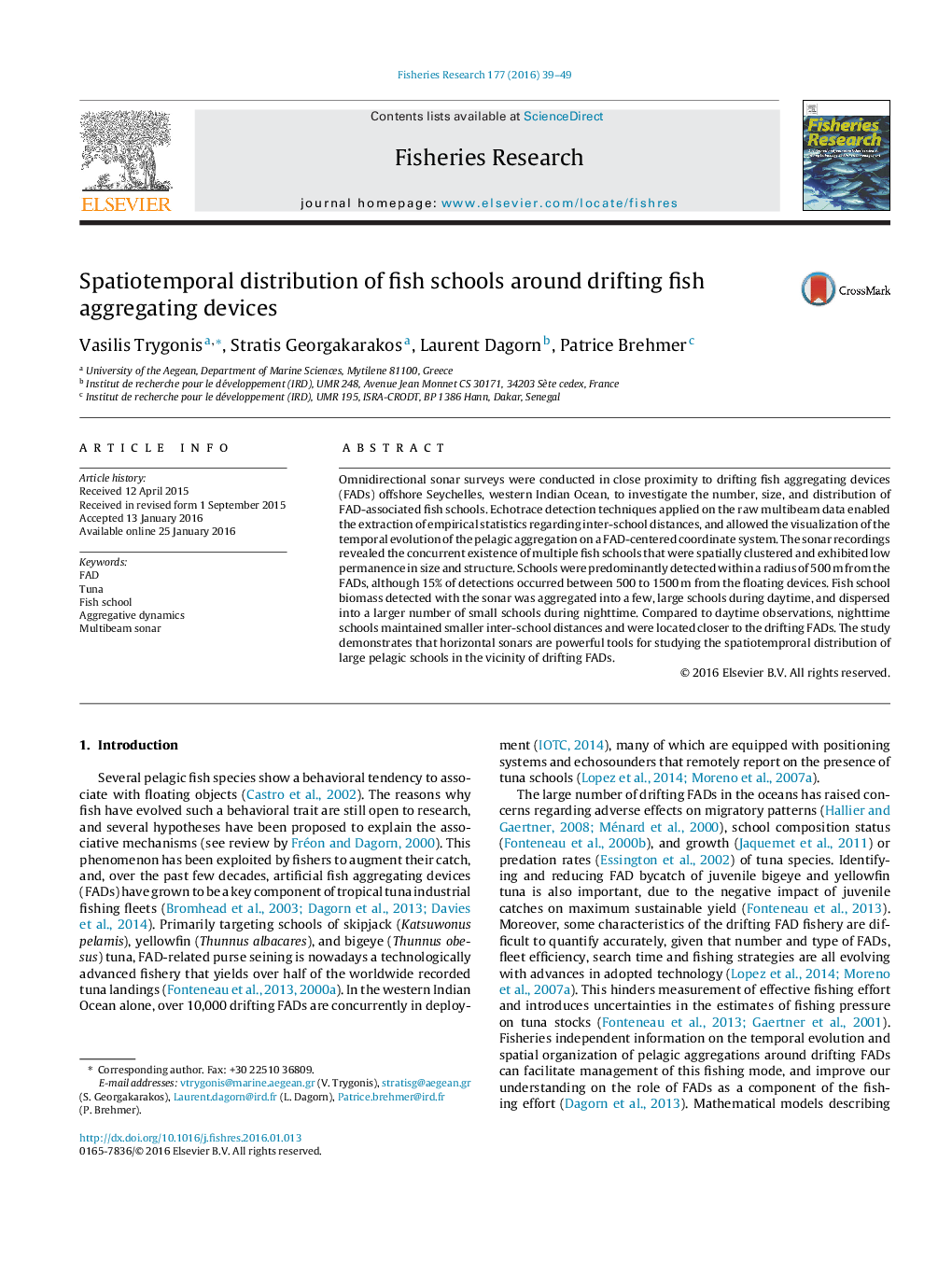| Article ID | Journal | Published Year | Pages | File Type |
|---|---|---|---|---|
| 6385533 | Fisheries Research | 2016 | 11 Pages |
â¢Multiple fish schools were concurrently present around the drifting FADs.â¢85% of school detections occurred within a radius of 500 m from the drifting FADs.â¢Daytime fish schools were larger than nighttime schools.â¢Nighttime inter-school distances were smaller and schools were closer to the FADs.
Omnidirectional sonar surveys were conducted in close proximity to drifting fish aggregating devices (FADs) offshore Seychelles, western Indian Ocean, to investigate the number, size, and distribution of FAD-associated fish schools. Echotrace detection techniques applied on the raw multibeam data enabled the extraction of empirical statistics regarding inter-school distances, and allowed the visualization of the temporal evolution of the pelagic aggregation on a FAD-centered coordinate system. The sonar recordings revealed the concurrent existence of multiple fish schools that were spatially clustered and exhibited low permanence in size and structure. Schools were predominantly detected within a radius of 500Â m from the FADs, although 15% of detections occurred between 500 to 1500Â m from the floating devices. Fish school biomass detected with the sonar was aggregated into a few, large schools during daytime, and dispersed into a larger number of small schools during nighttime. Compared to daytime observations, nighttime schools maintained smaller inter-school distances and were located closer to the drifting FADs. The study demonstrates that horizontal sonars are powerful tools for studying the spatiotemproral distribution of large pelagic schools in the vicinity of drifting FADs.
